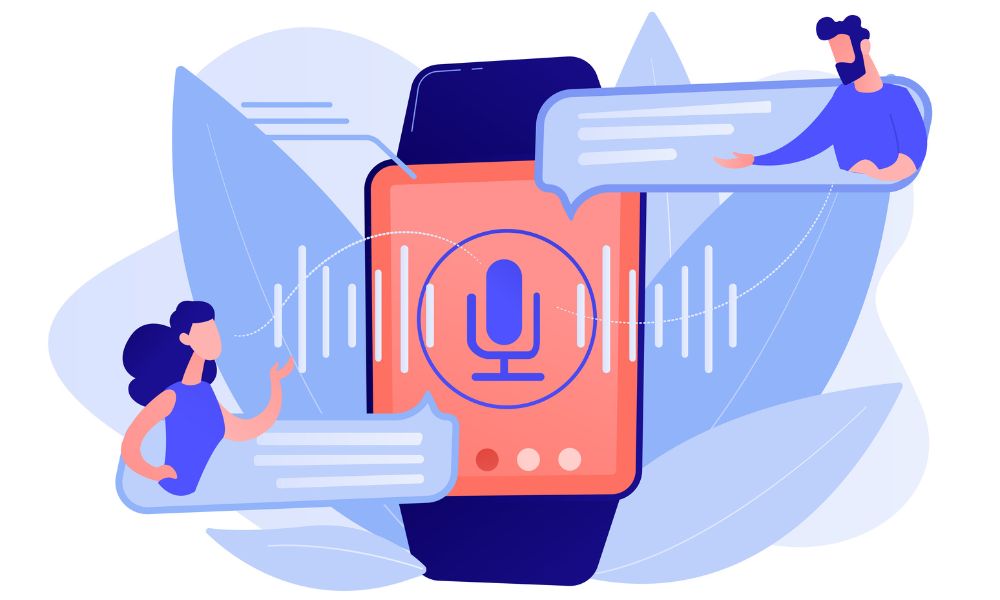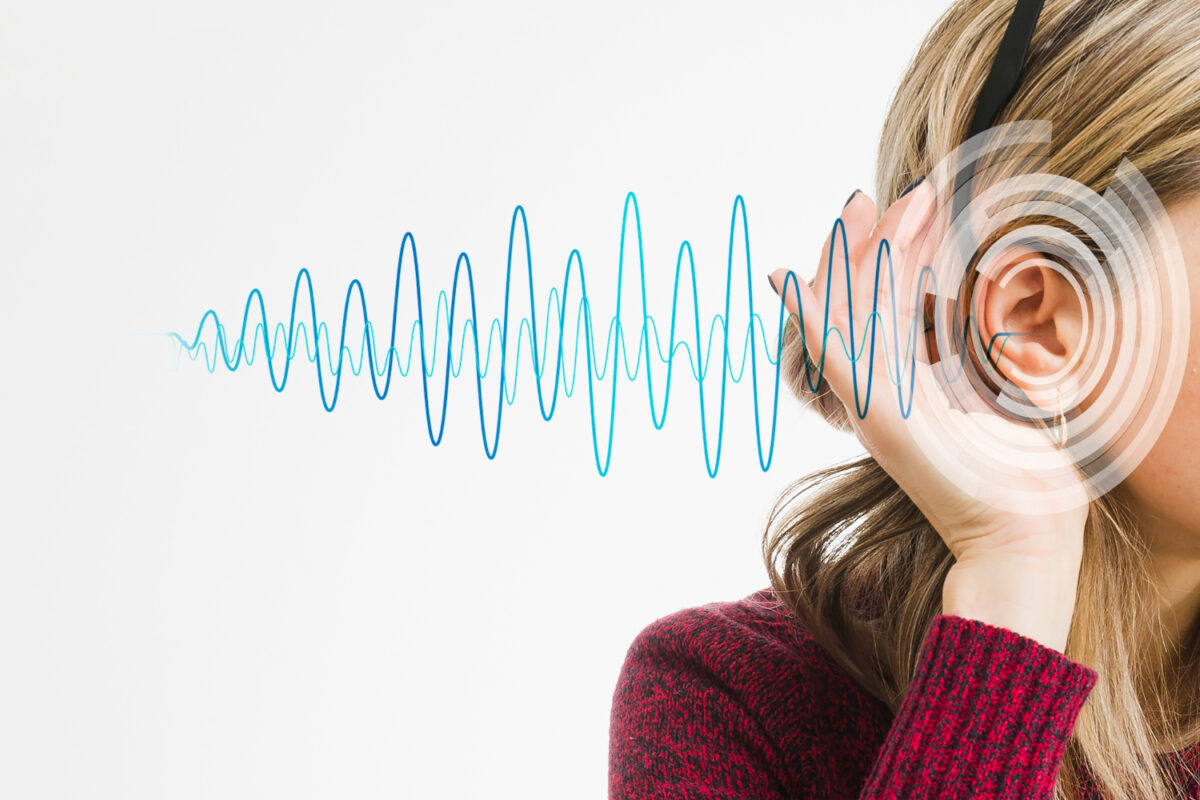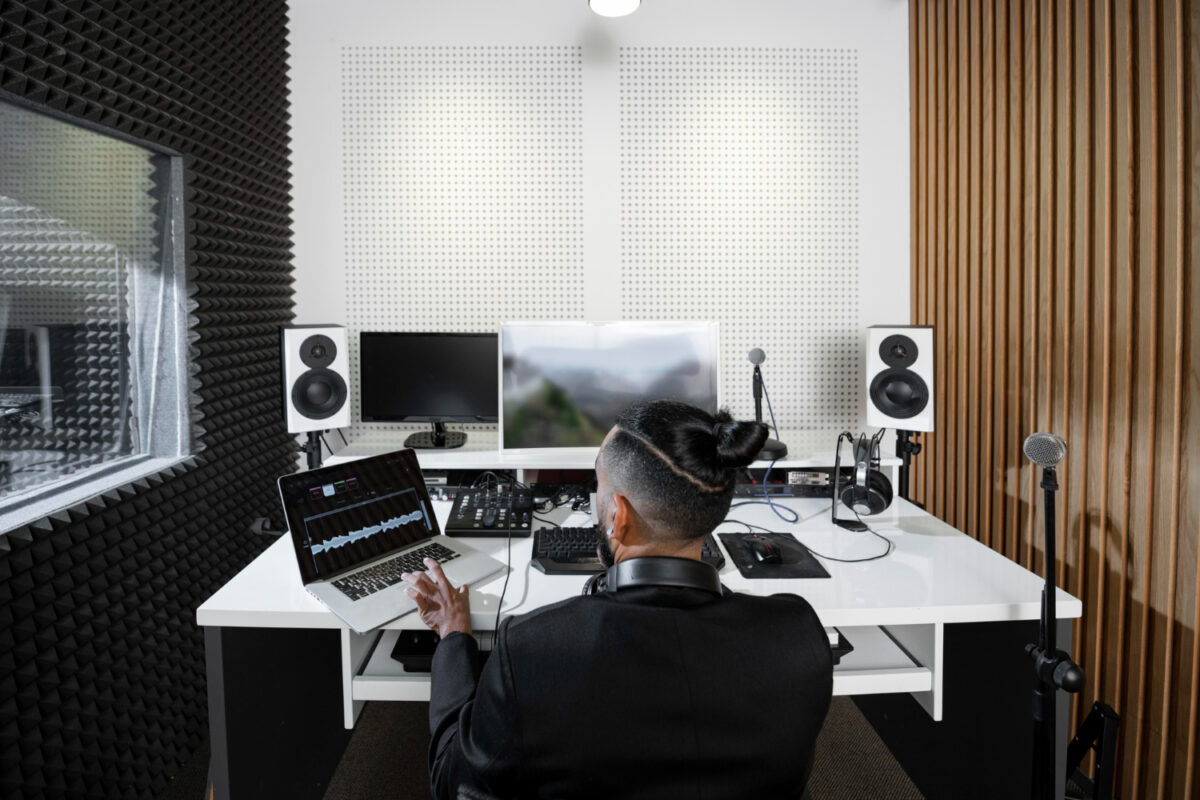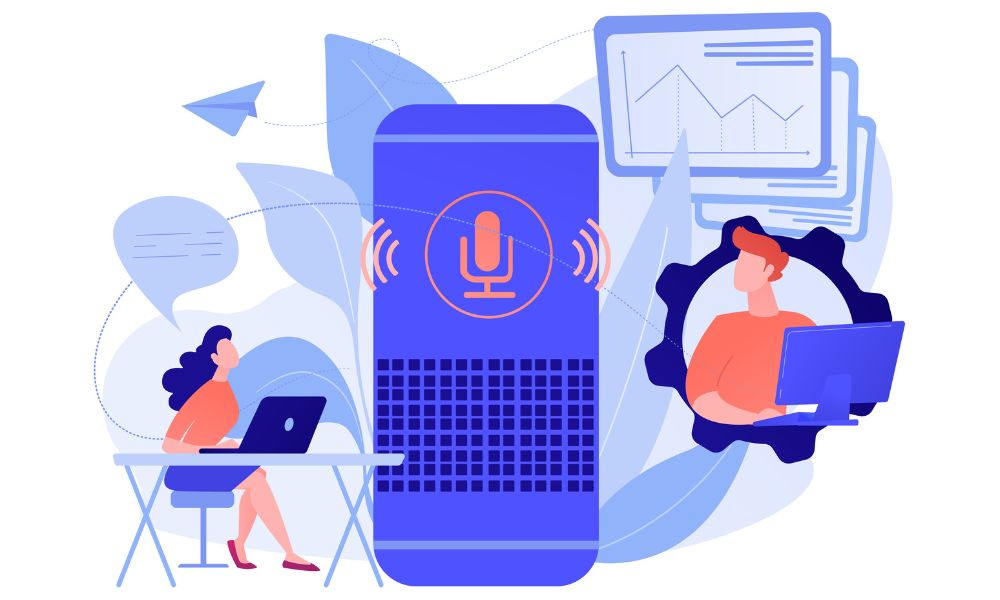
Ever since the humble tape recorder transformed into a high-tech smartphone, voice recording services and sounds have been revolutionized. No more fussing with tapes, no bulky machines to carry around – just the smartphone in your pocket is all you need to capture your thoughts, ideas, conversations, and more. However, just hitting the “record” button on your phone doesn’t necessarily guarantee crystal-clear, high-quality audio. That’s why I’m here to help. For help, visit us here: “Rian/Hunter Production“
Today, I’ll share some simple, but effective, tricks that can significantly improve the quality of your smartphone voice recording services. Maybe you’re an aspiring podcaster, a journalist on the go, an artist laying down ideas for new songs, or simply someone who wants to document life’s everyday moments in sound, these tips will come in handy.
Plus, we’ll also touch on voice recording services and how they can add another level of professionalism to your audio projects. But for now, let’s turn our attention to your very own pocket studio – your smartphone. Are you ready to step up your audio game?
Understanding Your Smartphone’s Capabilities
Before we get into the nitty-gritty of recording, let’s understand what your smartphone can and cannot do when it comes to voice recording. Each smartphone is a small powerhouse equipped with a built-in microphone, a speaker, and a software application for voice recording. The specifications and quality of these features can vary significantly depending on the phone model and manufacturer.
Built-in Apps and Features
Most smartphones come with a pre-installed voice recording app, which usually provides a straightforward interface for recording audio. On iPhones, this app is called Voice Memos, while Android devices usually come with an app simply called Recorder or Voice Recorder.
These built-in apps provide a decent starting point for capturing audio. They’re simple to use: open the app, press the record button, and you’re off. However, they often lack advanced features that can significantly improve the quality of your recordings.
Now, you may be wondering, “What more do I need?” or “What’s missing from my built-in app?” Well, for casual voice notes or reminders, your built-in app should suffice. But when you’re aiming for higher audio quality, or if you need more control over your recordings, you’ll need to explore beyond your phone’s basic voice recording app.
In the following sections, we’ll delve into the simple tricks and techniques that can elevate your smartphone voice recording from good to great. From choosing the right recording environment and positioning your phone correctly, to using external tools and selecting the best voice recording apps – we’ve got a lot to cover.
Choosing the Right Environment
Believe it or not, the space in which you choose to record your voice can drastically impact the quality of your audio. Remember, your smartphone is sensitive and can pick up a variety of sounds, including some that you may not even notice. Here are some pointers on selecting the optimal space for recording.
Seek a Quiet, Non-Reverberant Space
- First and foremost, aim to record in a quiet location. Sounds from traffic, people chatting, or the hum of household appliances can easily creep into your recordings and cause distractions. If possible, choose a place where external noises are minimal.
- Try to find a space with little to no echo. Rooms with hard surfaces like tile or hardwood often cause sound to bounce around, creating an echo effect. This might be great when you’re singing in the shower, but not so much for clear voice recordings. A room with carpeting, curtains, or upholstered furniture can help absorb sound and reduce echo.
Watch Out for Wind
If you’re recording outdoors, be aware of wind noise. Even a light breeze can create an unpleasant rustling sound in your recording. If it’s windy, try to find a sheltered spot or use a windscreen for your phone’s microphone (more on this in the external tools section).
Try the Closet
You might be surprised, but one of the best places to record voice on your smartphone is in your closet. Clothes act as a great sound absorber, helping to minimize echo and background noise. It may feel a little odd, but the audio quality could be well worth it.
Keep in mind that every location will have its unique sound properties. Experiment with different spaces and listen back to your recordings to find what works best for you.
Positioning Your Smartphone Correctly
You’ve picked a quiet, non-reverberant space. Great, now it’s time to look at how you’re holding or placing your smartphone. This might seem like a minor detail, but it can significantly impact the sound quality of your recordings.
The Magic Distance
So, how close should the phone be to your mouth? As a general rule, try to keep your smartphone about a hand’s width away from your mouth when you’re recording. Too close, and your voice may sound muffled or distorted due to the ‘proximity effect.’ Too far away, and the microphone may pick up more ambient noise than your voice.
Mind Your P’s and B’s
When speaking directly into the phone, try to position the microphone slightly off to the side of your mouth, rather than directly in front of it. This can help prevent ‘plosives’ – those hard ‘P’ and ‘B’ sounds that can cause distortion when the air from your mouth hits the microphone directly.
Use a Stand
If possible, use a smartphone stand to hold your phone while recording. This can help reduce any noise that might be picked up from your hand moving on the phone. It also allows you to maintain a consistent distance and angle from the microphone.
Experiment with Orientation
Lastly, don’t be afraid to experiment with the orientation of your phone. Some users find that they get better results when they rotate their phone and speak into the bottom microphone (the one used during regular phone calls) instead of the top one.
Using External Tools and Apps
While your smartphone is an excellent recording device on its own, there are additional tools and apps you can use to elevate the quality of your audio. From external microphones to advanced recording apps, here are some recommendations.
External Microphones
While the built-in microphone on your smartphone is decent for casual use, an external microphone can provide a noticeable boost in recording quality. There are several types of microphones available that are designed specifically for smartphone use, including lavalier mics (small microphones that clip onto your clothing), shotgun mics (long, directional microphones ideal for video work), and even studio-quality condenser microphones.
While it’s an additional investment, an external microphone can provide cleaner, clearer audio and more control over your sound. Plus, many of them can easily plug into your phone’s headphone jack or lightning port, or connect via Bluetooth.
Pop Filters
A pop filter is a screen that’s placed between you and the microphone to reduce or eliminate plosives – those pesky ‘P’ and ‘B’ sounds that can cause distortion. If you’re planning to do a lot of voice work on your phone, a pop filter can be a worthwhile addition to your setup. There are small pop filters available that can attach directly to a phone or to an external microphone.
Voice Recording Apps
While your smartphone’s built-in voice recording app is handy, it’s worth exploring other options. Many third-party apps offer advanced features like high-quality recording formats, adjustable sample rates, and built-in effects and editing tools. A couple of examples include Voice Record Pro for iOS and Easy Voice Recorder for Android.
Always remember that the best tool or app for you will depend on your specific needs and budget. Experiment with different options, read reviews and don’t be afraid to invest a bit if audio recording is something you’re serious about.
Effective Voice Techniques
No matter how high-tech your smartphone or how quiet your recording environment, your audio quality will ultimately depend on how you use your voice. Here are some effective voice techniques to help you sound your best.
Warm Up Your Voice
Just like you would warm up before a workout, warming up your voice before a recording can help prevent strain and improve the quality of your sound. This doesn’t need to be complicated. It can be as simple as humming a few bars of your favorite song, reading aloud for a few minutes, or even just chatting with a friend.
Hydrate
Hydration is key to keeping your voice in top shape. Drink plenty of water before and during your recording session. Avoid beverages that can dry out your voice, like coffee or alcohol. If you need a quick fix for a dry mouth or throat, try a sip of room-temperature water or sucking on a small piece of apple.
Watch Your Pace
When we’re nervous or excited, we tend to speak faster. Make a conscious effort to slow down, especially if you’re recording something like a podcast or audiobook where clear, understandable speech is crucial.
Take Breaks
Don’t be afraid to take breaks during your recording session, especially if it’s a long one. This will give your voice a chance to rest and can help maintain the consistency of your sound.
Breathe
Last, but not least, remember to breathe. Good breath support is essential for steady, strong vocal delivery. Try to take deep, controlled breaths from your diaphragm (the muscle located horizontally between your chest and abdominal cavities), not shallow ones from your chest.
Editing for a Polished Result
Once you’ve finished your recording, it’s time to put on the finishing touches. That’s where editing comes in. Editing your voice recordings might seem intimidating at first, but with a bit of practice and the right tools, it can significantly enhance the final result. Let’s explore some basic editing techniques and apps to get you started.
Noise Reduction
Even with a good recording environment and technique, you may still end up with some unwanted noise in your audio. Perhaps it’s a distant siren, a subtle echo, or the hum of your air conditioner. Thankfully, most audio editing apps have a noise reduction feature that can help clean up your recording.
Trimming and Cutting
Trimming is as simple as it sounds. You literally cut off parts of your recording that you don’t want, like long pauses, stumbles, or false starts. This can make your recording sound more professional and concise.
Equalization (EQ)
Equalization, or EQ for short, is a method of enhancing or reducing specific frequencies in your recording to achieve a desired sound. For example, if your recording sounds a bit thin and lacks bass, you can use an EQ to boost the lower frequencies.
Compression
A compressor is a tool that reduces the dynamic range of your recording, which is the difference between the loudest and quietest parts. It essentially makes quiet sounds louder and loud sounds quieter, resulting in a more balanced and consistent audio level.
Audio Editing Apps
There are plenty of user-friendly audio editing apps available that can perform these tasks. Audacity is a popular free option for desktop computers, while Ferrite Recording Studio is a highly-rated app for iOS users. Android users might consider WavePad Audio Editor.
Remember, editing is an art in itself. It can take some time to learn, but with patience and practice, it can greatly improve the quality of your voice recordings.
When to Consider Professional Voice Recording Services
Now that you’re equipped with a handful of strategies for recording high-quality audio on your smartphone, you might wonder if there are situations where it’s beneficial to consider professional voice recording services. The answer is, absolutely.
While your smartphone is a versatile tool capable of capturing good-quality audio, there are scenarios where the expertise and equipment provided by professional voice recording services can significantly elevate your project. Here are a couple of situations where you might want to consider such services:
High-Stakes Projects
If you’re working on a project where audio quality is paramount, like an audiobook, a professional podcast, or a corporate video, investing in professional services can ensure that you get the best possible result. Professionals have access to high-end equipment and recording studios that can far surpass the quality of smartphone recordings.
Time and Expertise
Audio editing and mastering are skills that take time to learn. If you’re on a tight deadline or if you’re not comfortable doing the editing yourself, a professional can handle it efficiently and effectively.
Advanced Needs
Sometimes, a project might have needs beyond simple voice recording, such as sound effects, background music, or multiple voice actors. Professional voice recording services often have extensive sound libraries and networks of voice talent to fulfill these requirements.
While professional voice recording services can be a substantial investment, the quality and peace of mind they provide can often be worth the cost, especially for important projects.
Wrapping Up
And there you have it, a comprehensive guide to creating high-quality voice recordings with your smartphone. It’s truly amazing what this little device in your pocket is capable of, isn’t it?
Remember, recording is a skill. Don’t be disheartened if your first few attempts don’t turn out perfect. Keep practicing, experimenting, and learning. Soon, you’ll be capturing crystal-clear audio that can impress anyone – and all it takes is your smartphone.
Happy recording.
Get in touch with us
Related Posts

Location-Based Sound Recording: 6 Expert Tips for Noise Reduction

Secrets of the Sound Booth: 5 Tips to Achieve Professional-Quality Voice-Over Recordings
About Us
Lorem ipsum dolor sit amet, consectetur adipiscing elit. Phasellus pharetra pretium leo, sed lacinia nulla. Quisque iaculis, lectus sed eleifend vehicula, mi elit facilisis purus, vitae ornare magna elit non quam.
Get in touch with us
Let’s Socialize
Get in touch with us


